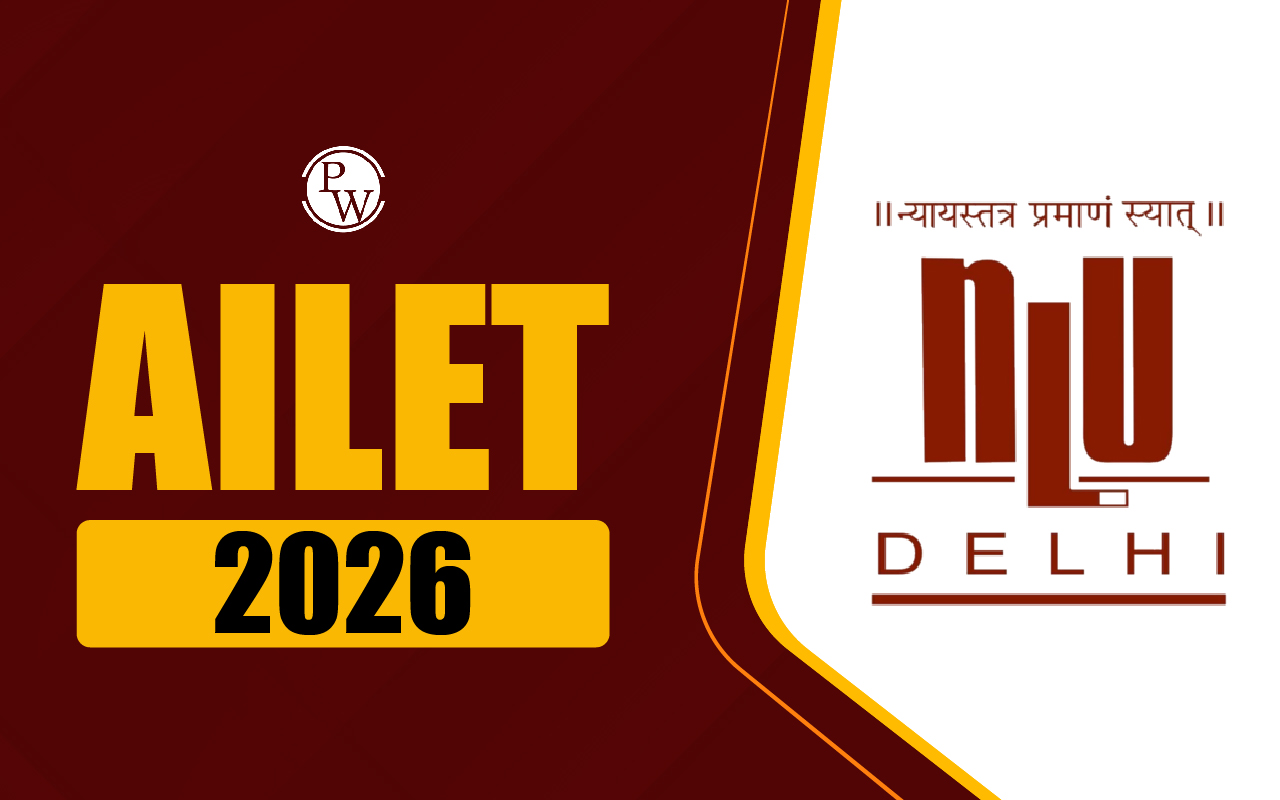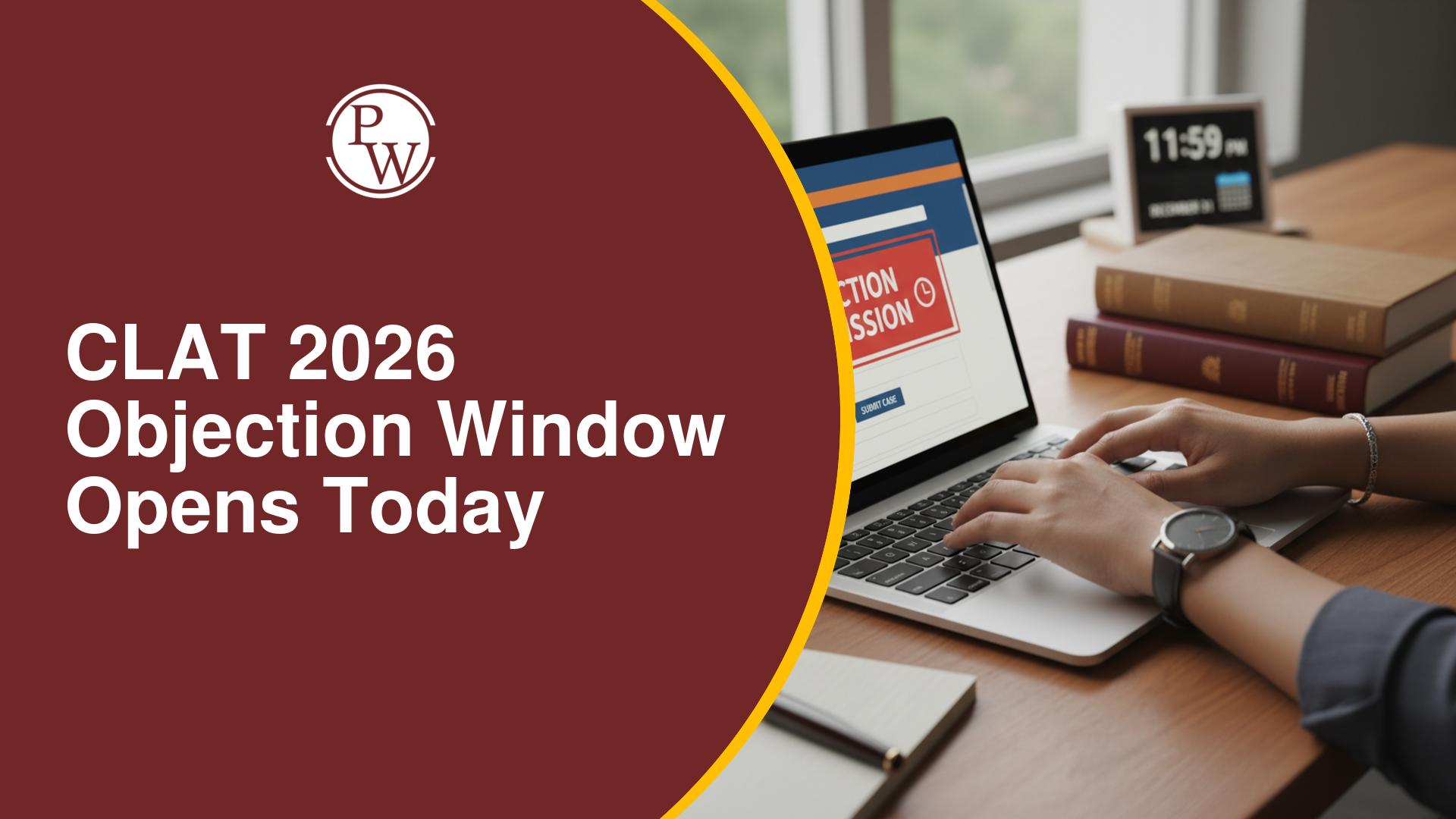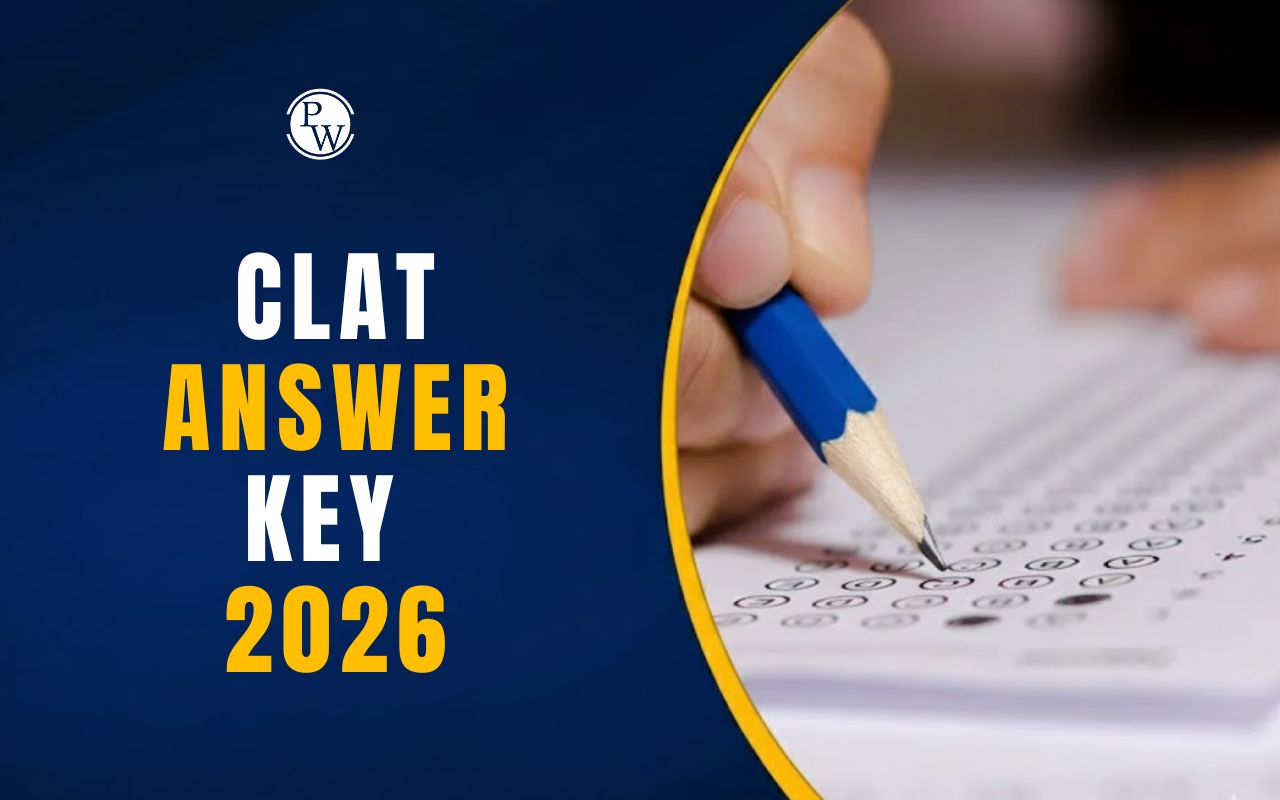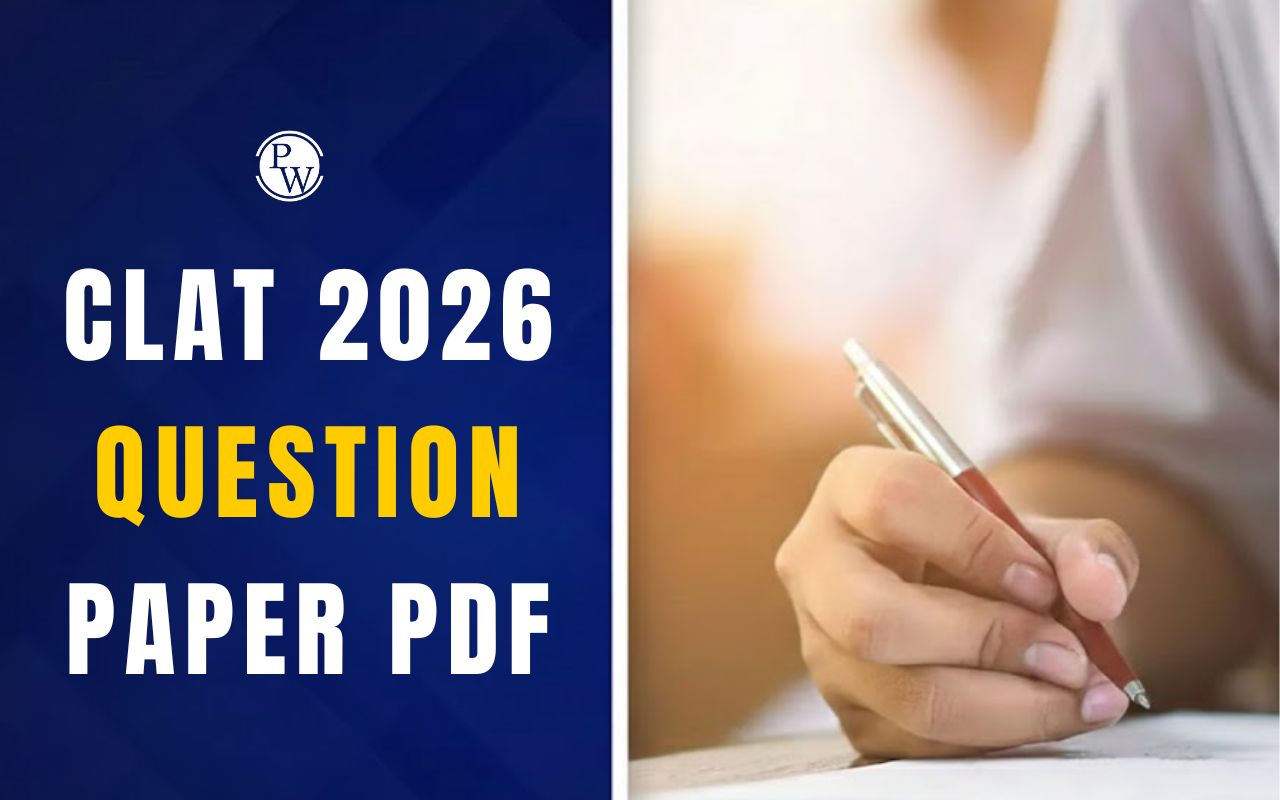
Critical Reasoning in CLAT 2025 Passage Solving Questions
Critical Reasoning in CLAT 2025 Passage Solving Questions: Get ready to improve your critical thinking skills for the CLAT exam! Learn how to solve CLAT passage questions for critical thinking and understand complex texts better. In the CLAT exam, the Logical Reasoning section usually has 22-26 questions. These questions involve arguments, assumptions, and drawing conclusions, all part of critical thinking.
This article will guide you through CLAT's critical thinking questions and offer tips for faster answering during the exam. So, let's explore the post to discover CLAT's critical thinking questions!
Critical Reasoning Questions for CLAT 2025 Types
| Question Type | Description |
|---|---|
| Structure of the Argument | Analyze the logical structure of the argument. |
| Supply the Conclusion | Provide the appropriate conclusion based on the given information. |
| Evaluate the Conclusion | Assess the validity or soundness of the given conclusion. |
| Strengthen the Argument | Find evidence or reasoning that strengthens the argument. |
| Weaken the Argument | Identify information that weakens the given argument. |
| Supply the Assumption | Determine the underlying assumption required for the argument to hold true. |
| Paradox Questions | Address questions that present seemingly contradictory or conflicting information. |
| The flaw in the Argument | Identify the error or weakness in the given argument. |
Also Read: CLAT Registration 2024
Critical Reasoning in CLAT 2025 Passage Solving Questions
Here are some important questions for the critical reasoning section of the Common Law Admission Test (CLAT). Practicing these will improve your logical reasoning skills for CLAT.
Logical Reasoning Passage based Questions for Passage No. 1 (Question 1 - Question 5)
In the bustling city of Indrapur, traffic jams have become a daily nightmare for its residents. The situation reached a tragic climax last Friday when a young student, Riya Sharma, lost her life due to a delayed ambulance caused by a VVIP convoy passing through the area. While the condolences from the Mayor poured in for Riya's family, it's evident that such incidents are not isolated.
(1) The chaos caused by VVIP convoys in Indian cities is undeniable. With traffic congestion already at alarming levels, these convoys exacerbate the situation, causing untold inconvenience to the public. Despite initiatives to end this practice, such as the removal of VIP beacons in 2017, long convoys continue to disrupt normal life. Meanwhile, in countries like Canada and Australia, politicians often travel alongside citizens, promoting a culture of equality and accessibility.
Question (1). What is the primary message conveyed by the author in the passage?
(a) The disregard for public safety caused by VVIP convoys is unacceptable in Indian cities.
(b) Public servants prioritize their convenience over the well-being of citizens.
(c) India should adopt the practice of politicians traveling alongside citizens to promote equality.
(d) Riya Sharma's death is solely the responsibility of the Mayor.
Answer: (a)
Question (2). What role do the statements marked [1] play in the passage?
(a) [1] provides evidence for the author's claim regarding traffic congestion in Indian cities.
(b) [1] introduces a new argument unrelated to the main topic of the passage.
(c) [1] is the author's main claim, while the rest of the passage supports it.
(d) [1] offers a solution to the problem presented in the passage.
Answer: (a)
Question (3). Which direction should India take based on the examples provided in the passage?
(a) Increase the number of VVIP convoys to ensure the safety of public officials.
(b) Implement stricter penalties for politicians violating traffic rules.
(c) Encourage politicians to travel alongside citizens to promote equality.
(d) Continue the practice of disrupting traffic for VVIP convoys.
Answer: (c)
Question (4). If the information in the passage is true, what must also be true?
(a) Riya Sharma's death is the first incident caused by a VVIP convoy in Indrapur.
(b) The removal of VIP beacons in 2017 has effectively ended the practice of long convoys.
(c) Implementing practices from Canada and Australia can alleviate traffic congestion in Indian cities.
(d) VVIP convoys in Indian cities are necessary for public safety.
Answer: (c)
Question (5). What assumption is made by the author regarding the traffic situation in Western countries?
(a) Traffic congestion in Western countries is worse than in Indian cities.
(b) Politicians in Western countries prioritize public safety over convenience.
(c) Riya Sharma's death could have been prevented if Indian politicians followed the example of Western countries.
(d) Traffic rules and enforcement are similar in both Western countries and India.
Answer: (d)
Logical Reasoning Passage based Questions for Passage No. 2 (Question 6 - Question 10)
In the small town of Riverside, public transportation is virtually nonexistent. Residents rely heavily on personal vehicles for commuting, leading to chronic traffic congestion during peak hours. Last Thursday, tragedy struck when a pregnant woman, Anita Singh, was unable to reach the hospital in time due to a VVIP convoy blocking the road. While condolences poured in from local authorities, the incident has sparked outrage among the townspeople.
(1) The absence of efficient public transportation in Riverside exacerbates the impact of VVIP convoys on the community. With limited alternative routes, any disruption to traffic flow can have dire consequences, as seen in Anita Singh's case. Despite calls for improved infrastructure and transportation options, little progress has been made, leaving residents vulnerable to similar incidents in the future.
Question (6). What is the main concern highlighted by the author in the passage?
(a) The lack of efficient public transportation in Riverside.
(b) The negligence of local authorities in addressing traffic congestion.
(c) The need for stricter penalties for VVIP convoys blocking roads.
(d) The responsibility of Anita Singh's death lies solely with the local authorities.
Answer: (a)
Question (7). What role does the statement marked [1] play in the passage?
(a) [1] provides evidence for the author's claim regarding the impact of VVIP convoys on the community.
(b) [1] introduces a new argument unrelated to the main topic of the passage.
(c) [1] is the author's main claim, while the rest of the passage supports it.
(d) [1] offers a solution to the problem presented in the passage.
Answer: (a)
Question (8). Which direction should Riverside take based on the examples provided in the passage?
(a) Increase the number of VVIP convoys to ensure the safety of public officials.
(b) Implement stricter penalties for politicians violating traffic rules.
(c) Improve public transportation infrastructure to reduce reliance on personal vehicles.
(d) Continue relying on personal vehicles for commuting.
Answer: (c)
Question (9). If the information in the passage is true, what must also be true?
(a) Anita Singh's death is the first incident caused by a VVIP convoy in Riverside.
(b) Calls for improved infrastructure and transportation options have been met with significant progress.
(c) The absence of efficient public transportation in Riverside has no impact on the community.
(d) Residents of Riverside have access to alternative routes to avoid traffic congestion.
Answer: (b)
Question (10). What assumption is made by the author regarding the transportation situation in Riverside?
(a) Public transportation in Riverside is more efficient than in larger cities.
(b) Local authorities prioritize the well-being of residents over the convenience of VVIP convoys.
(c) Anita Singh's death could have been prevented if Riverside had better transportation infrastructure.
(d) The impact of VVIP convoys on traffic congestion in Riverside is minimal.
Answer: (c)
Critical Reasoning in CLAT 2025 FAQs
Is critical reasoning asked in CLAT?
How do you ace CR in CLAT?
How can I improve my Logical Reasoning score in CLAT?
What comes under CLAT critical reasoning?









